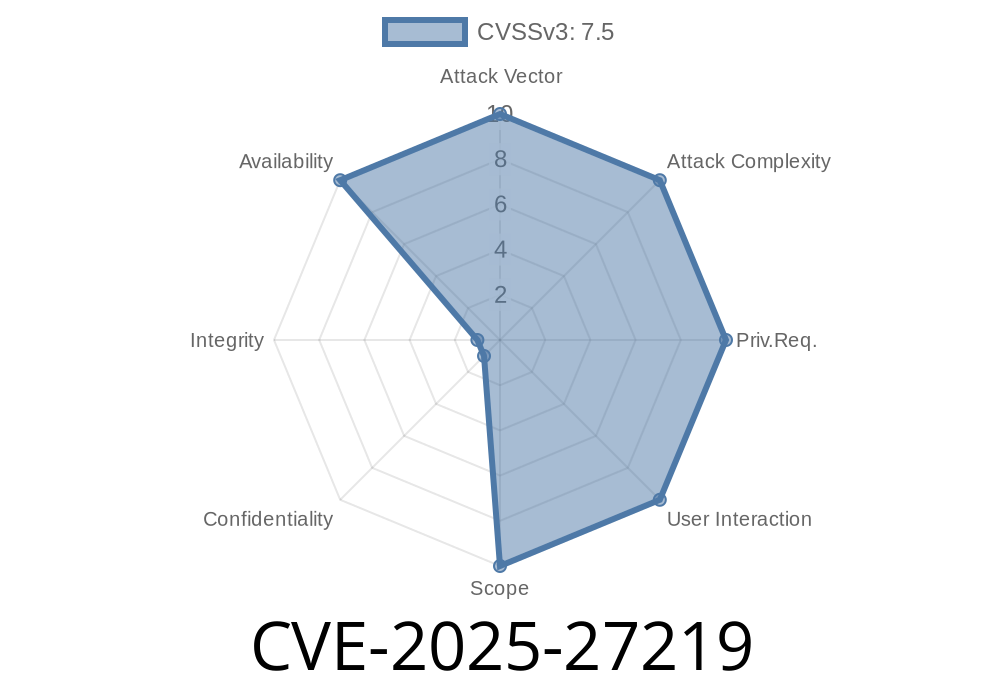Have you ever heard about the CGI gem vulnerability CVE-2025-27219? If you use Ruby and the CGI library, it's high time you got to know this vulnerability. In this post, we're going to dig deep into the vulnerability affecting the CGI::Cookie.parse method, discuss the potential risks, and provide necessary tips for preventing this Denial of Service (DoS) attack.
Overview of CGI Gem and Ruby
CGI (Common Gateway Interface) protocol is a standard way to connect external application software to an HTTP server. Ruby offers the CGI library that eases the handling of user input data from web forms, and it's exactly this library that has a vulnerability in versions before .4.2.
The Vulnerability - CVE-2025-27219
The vulnerability CVE-2025-27219 lies in the CGI::Cookie.parse method in the CGI library, which doesn't impose any limit on the length of raw cookie values it processes. The absence of this limitation can lead to excessive resource consumption when parsing extremely large cookies, ultimately resulting in a Denial of Service (DoS) attack.
Let's step back for a moment: what is a DoS attack? A DoS attack aims to make a network resource or service unavailable to its users – typically by temporarily or indefinitely disrupting the host or server connected to the network. The attacker intentionally generates excessive traffic, crashing or consuming the resources of the targeted system. In the case of CVE-2025-27219, a malicious user could craft a large cookie value that would cripple the application.
The Code Snippet
To get a full understanding of the issue, let's examine the original code snippet in the cgi/cookie.rb file:
def parse(raw_cookie)
cookies = {}
return cookies if !raw_cookie
raw_cookie.split(/[,;]/).each do |pairs|
name, attrs = pairs.split("=", 2)
next unless name && attrs
name = CGI::unescape(name.strip)
attrs = CGI::unescape(attrs.strip)
if !attrs.empty? && !cookie.has_key?(name)
cookies[name] = Cookie.new({ "name" => name, "value" => [attrs] })
end
end
cookies
end
As seen in the code above, the process of parsing the raw_cookie value doesn't impose any limit on its length. By manipulating a cookie value to be extremely large, an attacker could consume vast amounts of the target's resources, causing a DoS condition.
The Exploit Details
To exploit this vulnerability, an attacker would first have to craft an extremely large raw cookie value. Following that, the attacker sends the request containing the malicious cookie to the targeted Ruby server, resulting in excessive resource consumption and ultimately causing the DoS condition.
To illustrate the problem and measure the impact, refer to the link provided below
Link - Original Reference to Demonstrate Impact
Prevention and Solution
The good news is that this vulnerability has already BEEN patched in the CGI gem .4.2 for Ruby. In order to protect your application from this DoS vulnerability, it's highly advisable to update your Ruby CGI gem to the latest stable version.
Run bundle update cgi to install the latest version.
By following these steps, you'll update the CGI gem to the latest version, ensuring that your Ruby application is safe from the CVE-2025-27219 vulnerability.
Conclusion
In this article, we've explored the CVE-2025-27219 vulnerability in the CGI library for Ruby. By understanding the issue and updating your Ruby CGI gem to the latest version, you'll be protecting your application from potential DoS attacks and providing a safer and more reliable experience for your users.
Remember that staying up-to-date with software patches is a crucial part of keeping your application secure. So, always keep an eye on security updates and make necessary changes in a timely manner to avoid any potential risks.
Timeline
Published on: 03/04/2025 00:15:31 UTC
Last modified on: 03/05/2025 14:08:20 UTC
